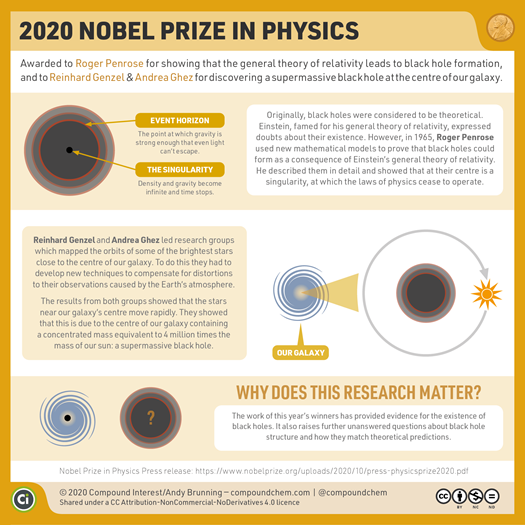2020 Nobel Prize in physics
- Posted By
10Pointer
- Categories
Science & Technology
- Published
11th Oct, 2020
-

- Awarded to Roger Penrose, Reinhard Genzel and Andrea Ghez for furthering the understanding of black holes.
- A black hole is formed when stars collapse and can be defined as a space in the universe with an escape velocity so strong that even light cannot escape it.
- Escape velocity is the speed at which an object must travel to override a planet or an object’s gravitational force.
- Since light cannot get out, black holes are invisible and can only be tracked with the help of a space telescope or other special tools.
- Light cannot escape from black holes because the gravity inside a black hole is very strong as a result of a lot of matter being squeezed into a small space.
- What do the award winners’ work tell us about black hole?
- Penrose discovered “that black hole formation is a robust prediction of the general theory of relativity.”
- Genzel and Ghez discovered a “supermassive compact object at the centre of our galaxy.” This is now known to be the Sagittarius A* supermassive black hole, which has a mass four million times that of the Sun and is confined to an area roughly the size of our Solar System.
- Sagittarius A* is one of two black holes whose photographs have been captured by the Event Horizon Telescope project.
- Black holes do not emit or radiate anything, even light. So, there is no way their image can be captured. But the area just outside its boundary, called the event horizon, which has vast amounts of gas, clouds and plasma swirling violently, does emit all kinds of radiations, even visible light.
